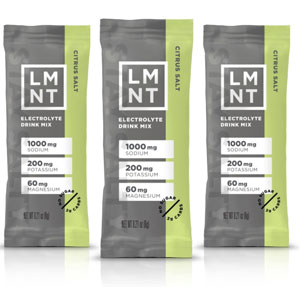Table of Contents
Have you been hearing about this keto diet thing that everyone’s talking about? It’s like a secret weapon for losing weight and feeling awesome. Basically, it’s all about eating fewer carbs and more fats, which turns your body into a fat-burning machine. It’s like a science experiment happening inside you! In this article, we’ll break down the keto diet into easy-to-understand terms and give you some tips on how to start your own transformation journey.
Understanding Ketosis
Ketosis is the secret sauce behind the magic of the keto diet. It occurs when your body has depleted its carbohydrate stores and starts breaking down fats into molecules called ketones. These ketones act as an alternative energy source for both your body and brain. The switch from glucose to ketones as the primary fuel leads to efficient fat burning, making it an ideal state for weight loss.
Getting Started with the Keto Diet
If you’re eager to embrace the keto lifestyle, here’s a step-by-step guide to help you get started:
Educate Yourself
Learn the basics of the keto diet and its potential benefits. Understand the science behind ketosis and how it differs from other eating plans.
Set Your Goals
Define your reasons for getting on the keto path. Whether it’s weight loss, improved energy levels, or other health benefits, having clear goals will keep you motivated.
Calculate Your Macros
Determine your preferred macronutrient ratios for the keto diet. Typically, the standard breakdown is 70-75% of calories from fats, 20-25% from proteins, and 5-10% from carbohydrates.
Clean Out Your Pantry
Rid your kitchen of high-carb temptations to set yourself up for success. Stock up on keto-friendly foods like avocados, nuts, eggs, fatty fish, and leafy greens.
Start Slowly
Ease your way into the keto diet to allow your body to adapt gradually. Begin by reducing your carbohydrate intake over a few days before fully committing to the diet.
Stay Hydrated
As your body enters ketosis, it tends to excrete more water and electrolytes. Stay hydrated and consider taking electrolytes to prevent the “keto flu.”
Foods to Eat on a Keto Diet
The keto diet emphasizes whole, nutrient-dense foods that support ketosis and nourish your body. Here are some keto-friendly foods to incorporate into your meals:

Healthy Fats
- Avocados
- Olive oil
- Coconut oil
- Butter
- Nuts and seeds
Proteins
- Fatty fish (salmon, mackerel)
- Eggs
- Poultry (chicken, turkey)
- Grass-fed meats
Low-Carb Vegetables
- Leafy greens (spinach, kale)
- Cruciferous vegetables (broccoli, cauliflower)
- Zucchini
- Bell peppers
Dairy (in moderation)
- Cheese
- Greek yogurt
- Heavy cream
Healthy Snacks
- Keto-friendly protein bars
- Pork rinds
- Cheese crisps
- Nuts

Foods to Avoid on a Keto Diet
To maintain ketosis, it’s essential to avoid high-carb foods. Here are some items as a no-go:
- Sugary foods (sodas, candies, pastries)
- Grains (bread, rice, pasta)
- Starchy vegetables (potatoes, sweet potatoes)
- Legumes (beans, lentils)
- High-sugar fruits (bananas, grapes)
Healthy and Easy Keto Recipes
We’ve dedicated a section of our blog for recipes including Keto ones. Just click on “Keto” tag to show all the recipes falling into this category, bon appétit! 😊
This way for Health and Easy Keto Recipes!
Tracking Progress and Staying Motivated
Tracking your progress on the keto diet can be highly motivating. Here are some ways to stay on track:
Keep a Food Journal
Record your daily food intake and track your macronutrients in a Keto dedicated journal or notebook. This will help you understand your eating patterns and make adjustments if needed.
Measure Ketones
Use ketone testing strips or a blood ketone meter to monitor your ketone levels. This will confirm if you’re in ketosis and offer additional motivation.
Celebrate Non-Scale Victories
Focus on the benefits beyond the scale, such as increased energy, mental clarity, and improved sleep.
Join a Supportive Community
Connect with others following the keto diet for advice, recipe ideas, and encouragement.
Reward Yourself
Treat yourself to non-food rewards for achieving milestones on your keto journey.
Combining Keto with Exercise
Incorporating regular physical activity into your keto lifestyle can enhance your results and overall well-being. Consider the following tips:
- Cardio Exercises: Engage in aerobic activities like walking, jogging, cycling, or swimming to burn extra calories and support your heart health.
- Strength Training: Lift weights or do bodyweight exercises to build lean muscle mass and boost your metabolism.
- Stay Hydrated: Ensure you drink plenty of water before, during, and after exercise to maintain proper hydration.
- Timing Matters: Some people find that exercising in a fasted state (before breakfast) enhances fat burning.
- Listen to Your Body: Be mindful of how your body responds to exercise on the keto diet. Adjust your routine as necessary to prevent overexertion.
Addressing Potential Pitfalls and Precautions
While the keto diet offers numerous benefits, it’s essential to be aware of potential pitfalls and take necessary precautions:
Keto Flu
Some people experience flu-like symptoms during the initial transition to ketosis. Stay hydrated, consume electrolytes, and be patient as your body adapts.
Nutrient Deficiencies
To prevent potential nutrient imbalances, focus on a diverse array of nutrient-rich foods. Consider supplements if needed, but consult a healthcare professional first.
Sustainability
The keto diet may not be suitable for everyone in the long term. Listen to your body and be open to adjusting your eating plan as needed.
Consult a Healthcare Professional
If you have any pre-existing health conditions or concerns, consult a healthcare professional before starting the keto diet.
Long-Term Sustainability and Lifestyle Adaptation
The keto diet can be a powerful tool for weight loss and improved well-being, but it’s essential to consider its long-term sustainability:
Cyclical Ketogenic Diet
Some individuals find success with a cyclical approach, where they follow the keto diet most days of the week and have higher-carb days occasionally.
Targeted Ketogenic Diet
Athletes or active individuals may benefit from a targeted approach, where they consume a small amount of carbs before intense workouts.
Healthy Eating Principles
Whether you continue with keto or transition to a more balanced eating plan, prioritize whole, nutrient-dense foods to support your health.
Flexibility
Embrace flexibility in your eating habits while maintaining the core principles of a balanced diet and portion control.
Success Stories and Real-Life Experiences
The keto diet has been a transformative journey for countless individuals. Real-life success stories are a testament to the power of dedication, resilience, and personalized approaches to health and well-being. Remember, every person’s body is unique, so embrace your own journey and progress at your own pace.
Frequently Asked Questions about Ketone Testing
What are ketones and why are they important?
Ketones are substances that your body produces when it breaks down fat for energy, especially when there is not enough glucose or insulin available. Ketones can be a source of fuel for your muscles and brain, but they can also cause problems if they build up too much in your blood. People with diabetes are at risk of developing high levels of ketones, which can lead to a serious condition called diabetic ketoacidosis (DKA). DKA can cause nausea, vomiting, abdominal pain, confusion, coma, and even death if not treated promptly. Therefore, it is important to monitor your ketone levels regularly if you have diabetes, especially type 1 diabetes.
How can you test your ketone levels?
There are two primary methods to check your ketone levels: urine tests and blood tests. Urine tests use a strip of paper that changes color depending on the amount of ketones in your urine. You can do this test at home by dipping the strip into a sample of your urine or holding it under your urine stream. You then compare the color of the strip to a chart that shows the ketone levels. Blood tests use a meter and a strip that requires a drop of blood from your finger. You can perform this test at home by using a lancet to prick your finger and applying the blood to the test strip The meter then displays the ketone level in millimoles per liter (mmol/L). Blood tests are more accurate and reliable than urine tests, as they can detect ketones earlier and reflect the current ketone level in your blood
When should you test your ketone levels?
Your doctor will advise you on when and how often to test your ketone levels, depending on your type of diabetes, your treatment plan, and your health condition. However, some general situations when you should test your ketone levels are:
– When your blood sugar level is higher than 250 mg/dL for two days in a row
– When you are sick or have an infection, injury, or surgery
– When you have symptoms of DKA (see FAQ Point 1), such as thirst, dry mouth, frequent urination, fatigue, dry or red skin, nausea, vomiting, stomach pain, trouble breathing, confusion, or fruity breath
– When you are pregnant or breastfeeding
– When you are fasting or following a very low-carbohydrate diet
What are the normal and abnormal ketone levels?
The normal and abnormal ketone levels depend on the type of test that you use. For urine tests, the ketone levels are usually reported as negative, trace, small, moderate, or large. For blood tests, the ketone levels are usually reported in mmol/L. The table listed at the end of this FAQ section shows the normal and abnormal ketone levels for both urine and blood tests.
What should you do if you observe high ketone levels?
If you have high ketone levels, you should contact your doctor or health care team immediately, as you may have DKA or be at risk of developing it. You may need to take extra insulin, drink plenty of fluids, check your blood sugar and ketone levels more frequently, and seek emergency medical care if your condition worsens. Do not exercise if you have high ketone levels, as this can increase them further. Follow your doctor’s instructions and treatment plan carefully to lower your ketone levels and prevent complications
| Urine test | Blood test | Interpretation |
|---|---|---|
| Negative | Less than 0.6 mmol/L | Normal, no ketones detected |
| Trace | 0.6 to 1.0 mmol/L | Low, some ketones detected |
| Small | 1.1 to 1.5 mmol/L | Moderate, more ketones detected |
| Moderate | 1.6 to 3.0 mmol/L | High, high ketones detected |
| Large | More than 3.0 mmol/L | Very high, very high ketones detected |
Was this Article Helpful?
We hope that you found this article helpful and informative. We are always striving to provide you with the best content and resources on how to start and succeed on the keto diet. We would love to hear from you and get your feedback and suggestions.
Please visit our Facebook page and leave us a comment or a message. Tell us what you liked or disliked about this article, what you learned or want to learn more about, and what you want us to write about next.
Your input is very valuable to us and helps us improve our work and achieve our goal of helping you reach your health and fitness goals. Thank you for reading and supporting us.




















